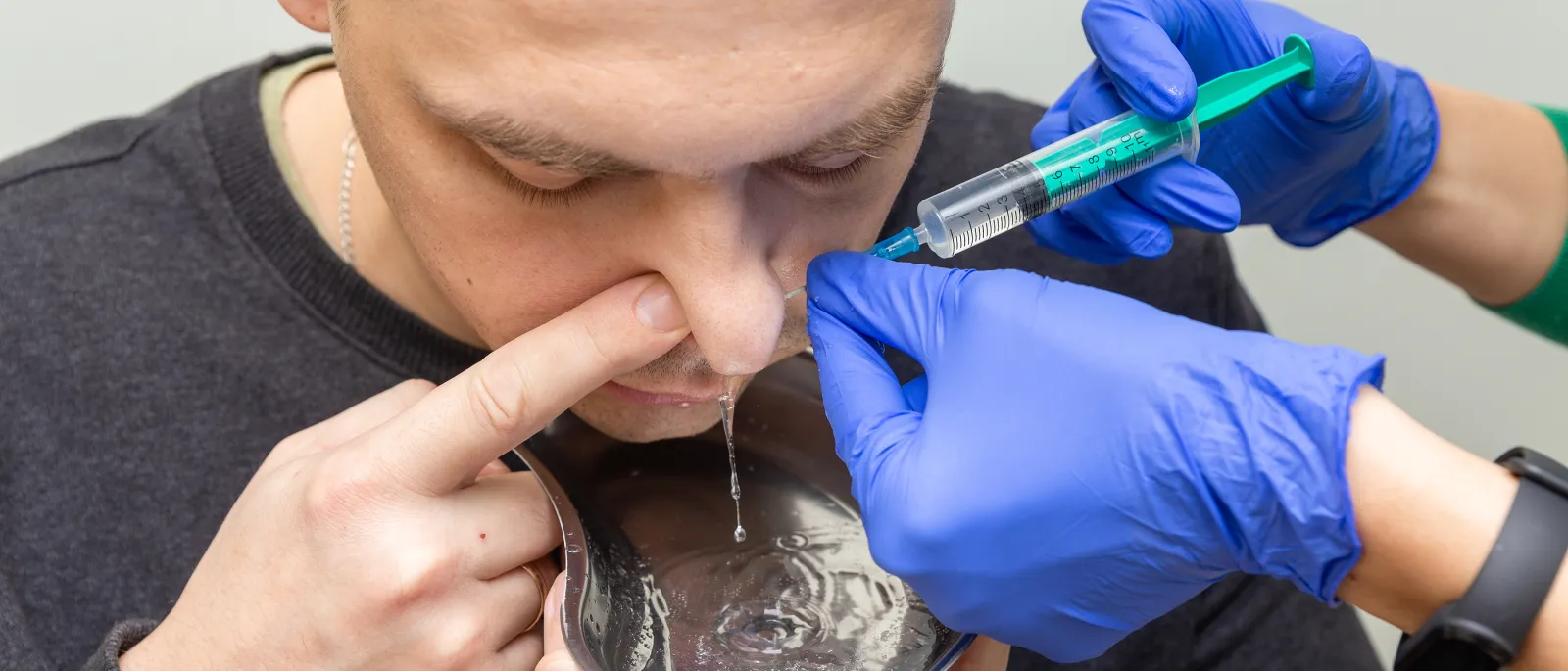Sinus infections. Allergies. Colds. They can all take a toll on your nose. Not only do these conditions make it hard to breathe properly, but they can affect your sense of taste and smell. Fortunately, you have many options for treating your most annoying nose-related symptoms, including a procedure called sinus irrigation.
Although sinus irrigation sounds a little intimidating, it's a gentle process designed to flush any unwanted liquids and particles out of the inside of your nose. The idea behind sinus irrigation is that if you can rid your nostrils and upper throat of excess mucus, pollen, and germs, you can help restore your nose to proper working condition (or as close as possible.)
While a doctor can handle sinus irrigation, it can also be something you can do at home under the proper circumstances and with the right equipment. This guide will help you better understand how to approach sinus irrigation confidently and soothe your stopped-up, itchy nose.
Methods to Irrigate Your Sinuses: From Balloons to a Nasal Flush Machine
The number one goal of sinus irrigation is to send a non-irritating liquid — usually a slightly warm saline solution — into your nose. Typically, this is done by depositing the liquid in one nostril and tilting your head so the liquid runs to the back of your throat and then out the other nostril. The exact technique can take some time to get exactly right. Don't be surprised if the first time you try it; you end up with saline running down your throat. This is a common event among those trying sinus irrigation for the first time.
Many people use a neti pot to send disinfected water or saline into their nostrils. A neti pot looks like a much smaller version of a kitchen teapot. It's easier to manipulate than a regular teapot, though. Consider purchasing a nasal flush machine if you'd prefer something even easier. These systems are available over the counter as well as online. Ask your ENT physician or team for a recommended brand. A nasal flush machine will do more of the work for you.
Think about getting a balloon sinus dilation as a backup to your sinus irrigation. This is a treatment you'll get at your ENT's office. The doctor uses a special balloon device to firmly but comfortably expand your sinus cavities that sit just under your eyes, next to your nose, and above your back upper molars. Once expanded, your sinus cavities have more room in them, which can provide instant relief if you struggle with year-round allergies and the stuffiness accompanying them.
Is Sinus Irrigation a Cure for Allergies and Infections?
While sinus irrigation can be a safe, effective way to give yourself some time off from the irritations associated with sinus infections and allergies, it's not a cure. Your allergies won't disappear just because you're applying sinus irrigation. Neither will sinus infections. You should always make an appointment with an ENT to determine if you have a sinus infection vs allergies, particularly if you've been having nose problems for a few days.
If you have an infection, you'll be prescribed medications to make it disappear quickly. How long does a sinus infection last? It varies from person to person, but it's not unusual for sinus infections to stick around for a few weeks. You can use a sinus irrigation process to help you feel better, but the irrigation can't eliminate the source of the infection. That's why medications are so important.
If you are diagnosed with seasonal or other allergies, your doctor may suggest the use of allergy medications as well as other treatments. Again, you can use your neti pot, nasal flush machine, or other sinus irrigation device while waiting for your allergy signs to wane or disappear.
Is It Time to Try Sinus Irrigation?
Following proper instructions, sinus irrigation shouldn't hurt you or your nose. However, you shouldn't rely on sinus irrigation as a substitute for seeing a healthcare provider when you have a problem with your nose, sinuses, nostrils, or throat.
Need an appointment with an ENT? Contact ENT of Georgia South for a quick response.

